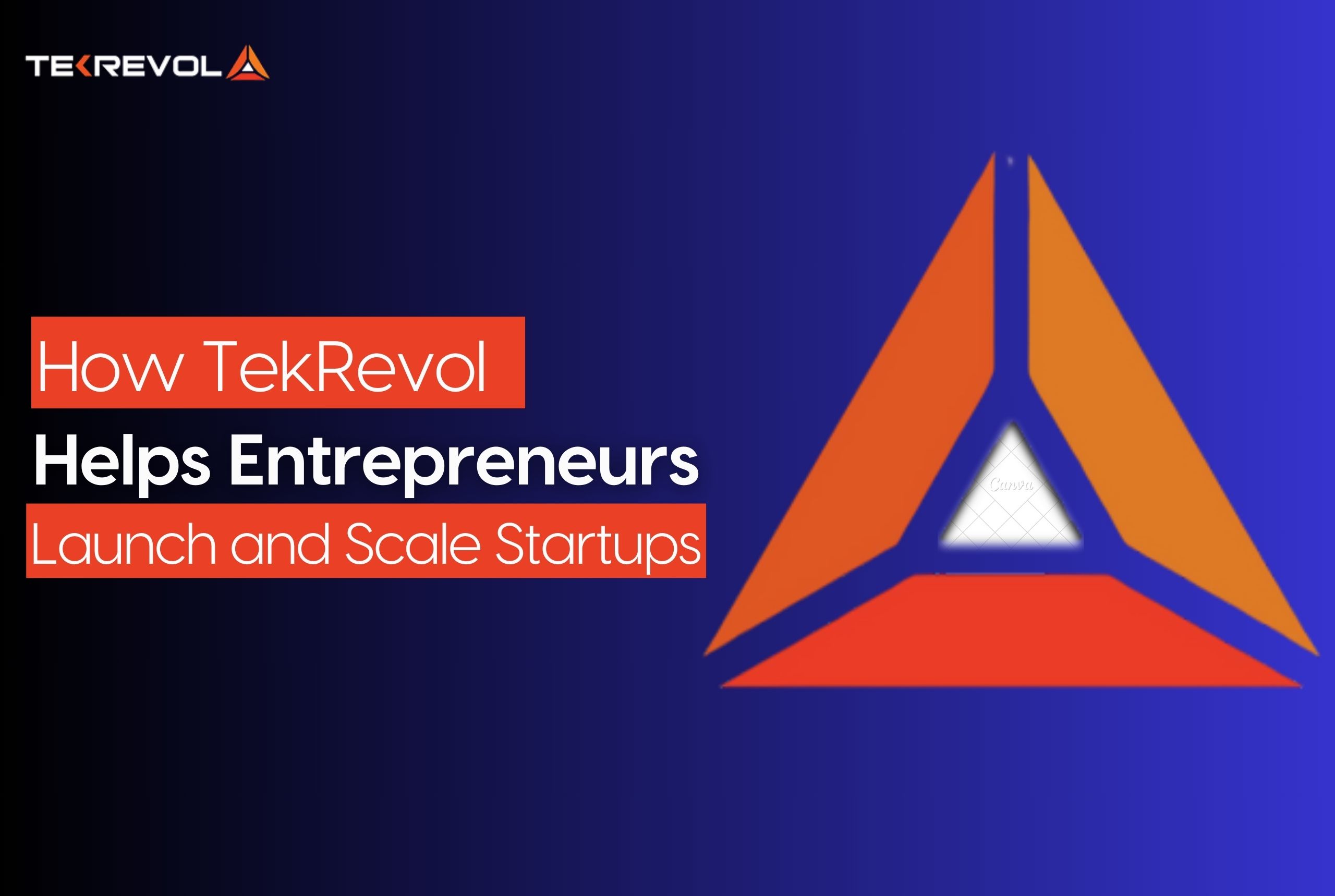Cash flow gaps, expansion plans, or a product launch — whatever your need, securing funding is often step one. But what happens when traditional financing doesn’t come through? According to a 2024 report by the Federal Reserve, 43% of small businesses struggled to get full financing last year.
The answer? Look beyond the bank. Many business owners are now turning to finance alternatives that offer greater flexibility, speed, and accessibility.
The alternative finance space is booming — and it’s quickly becoming a go-to for businesses ready to grow on their own terms.
It’s not enough to simply know that alternative financing options exist — what matters is identifying which ones best align with your business model and how to position yourself strategically to secure funding. In this blog, we’ll dive into the top finance alternatives gaining traction, along with pros and cons to help you make an informed decision.
What Is Alternative Funding?
Alternative funding comprises ways of acquiring cash for your organization that are not traditionally conventional example, bank loans or credits from lenders. This alternative funding appears more promising, especially if the one applying for loans has experienced rejections, has an imperfect credit history, or simply cannot decide how much funding they actually need for their business.
Most of them are available online, and all are aimed at being flexible and customized to different business types. However, it becomes pretty overwhelming to even try and figure this out since so many options are available.
That’s why we’ve broken down all those alternative funding options, so you can peruse what’s available and find your best funding option for your enterprise.
How Alternative Funding Works?
Small firms need alternative funding to get a faster, simpler solution compared to traditional bank loans. Most applications take only a few minutes to complete online with little documentation, usually requiring only a valid identification card and recent financial statements.
There are no upfront fees, and even the approval process seldom takes longer than 24 hours. After being approved, funds may be dispersed anywhere from a few hours to three days, making it perfect for businesses with immediate cash flow demands.
Eligibility is often determined by characteristics such as the business’s revenue, credit history, and length of time in business, with this being a viable option when the greatest acceptance rates are required for speed and flexibility.
List of Best Finance Alternatives For Your Business in 2025
Want to fund your business without having to go through a bank? Alternative financing options are becoming the default for both start-ups and small businesses in search of flexible and accessible cash flow. Here are the most popular apps for possible finances:
1. Crowdfunding
Crowdfunding has become one of the most sought and accessible ways to raise funds for startups and small businesses. Instead of approaching a traditional lender, a business raises funds by appealing to a wide audience online-whether customers, fans, or investors.
Types of crowdfunding models are:
- Reward-Based: It promises a product or service in return.
- Equity-Based: it assures an investor a share in the company.
- Donation-Based: It refers to those who give without expecting returns.
- Debt-based (peer-to-peer lending): Funds are repaid with interest.
No repayment is required for most of the non-debt models if a person’s campaign meets its goal. This is why it’s a low-risk, good-cost method for business ventures intending to launch new products, validate ideas, or gain early-stage momentum without incurring the burden of traditional debt.
Best for: Startups, product launches, creative projects, and early-stage companies.
Popular platforms: Kickstarter, Indiegogo, GoFundMe
Important Point:
Invest in a solid-looking campaign page with a high-converting video, with stronger visuals, and define a value proposition. Create enticing reward tiers, and market in such a way that there will be an early rush.
Pros:
- Validates your idea with real users
- Builds a loyal customer base early
- No repayment (in rewards-based models)
Cons:
- Marketing-intensive
- Not guaranteed to succeed
- Platform fees apply
2. Peer-to-Peer (P2P) Lending
Peer-to-peer (P2P) lending, known as social lending, is a contemporary financing scheme that connects a borrower with individual investors online. It is an amalgamation of crowdfunding, conventional loans, and private investment, hence creating an unusual and flexible funding mechanism for growing businesses.
Unlike traditional loans through banks, P2P platforms like LendingClub and Funding Circle allow you to present your business case directly to potential investors. In return, investors fund your loan according to the strength of your pitch, business model, and growth potential.
Such a financing option is particularly suited to the growth plans of an established company. Typically, standout businesses have a strong pitch deck and solid financials.
With speedier approvals, competitive interest rates, and the chance to form relationships with your creditors, P2P lending stands out as the best option for businesses that are ready for their next big step.
Best for: Small businesses with decent credit that need moderate capital.
Popular platforms: LendingClub, Funding Circle, Prosper
Pro Tip: Even though P2P lenders may be less strict than banks, they still assess risk. Strengthen your credit profile, business plan, and repayment ability to get the best rates.
Pros:
- Easier access than traditional loans
- Transparent terms
- Competitive interest rates
Cons:
- Credit checks still apply
- Repayment is mandatory
- Limited funding compared to VC
3. Venture Capital
Venture capital is a kind of private equity in which an investor provides capital to startups and growing businesses in exchange for ownership stakes in the company. Venture investments are typically made by wealthy individuals, venture capital firms, or funds that pool money from various institutional and private investors.
Unlike traditional loans, venture capital does not have to be repaid and does not incur any interest; it is, therefore, a form of risk capital-funding based upon the future possibility of growth and returns. However, it means giving up some part of your business equity and possibly some control, depending on the deal structure.
Obtaining the proper pitch and business plan can unleash limitless resources to help your firm grow and penetrate the market, but the competition for VC funding is fierce.
Best for: High-growth startups with scalable models (e.g., tech, SaaS, AI).
Popular VC firms: Andreessen Horowitz, Sequoia Capital, Accel
Pro Tip: Don’t pitch to every VC — research firms that have invested in businesses like yours and customize your pitch accordingly.
Pros:
- Access to large capital amounts
- Strategic guidance and networking
- No repayment obligation
Cons:
- Equity dilution
- Intense due diligence
- Investors may demand influence in decision-making
4. Angel Investors
Angel investors are individuals investing their own money into early stage start-ups against a certain percentage of equity ownership. Mostly, they are seasoned entrepreneurs or professionals who want business ideas to blossom while receiving a potential return on their investments.
Unlike venture capitalists, angel investors step in when the company is still in its infancy and the risk is at its highest, with a larger potential return. They can provide strategic advice, industry connections, and coaching in addition to cash, which is excellent for firms that are just starting.
Usually, the amount of investment does not compare with that of a VC; however, the tailored support, along with the flexibility angel investors provide, makes all the difference between a really cool alternative source of funding for business-ready entrepreneurs.
Best For: Startups with sturdy business plans and high-growth potential looking for funding and a mentor.
Pro Tip: Focus on creating a powerful pitch that highlights your vision, market opportunity, and long-term potential. Financial projections are only as crucial as establishing a connection and confidence.
Pros:
- Quick decision-making
- Valuable mentorship
- Flexible investment terms
Cons:
- Smaller investment amounts
- Equity loss
- Hard to find the right match
5. Public Equity
Public equity refers to the scenario when companies go public, offering their shares to the public through stock exchanges for investments. Going public also allows companies to raise larger amounts of money to provide funding for growth, for innovation, or strategic expansion.
In the case of the United States, companies intending to raise more than $5 million through a public offering are required to file a registration statement with the Securities and Exchange Commission (SEC), using Form S-1 most of the time.
The prospectus ensures SEC compliance by disclosing financials, risks, and governance, aiding investor confidence and clarity.
It brings many advantages along with very strict regulations and increased scrutiny, like greater accessibility of capital, well-known brand visibility, and a chance to gain long-term investors.
Best for: Established, fast-growing companies with strong financials, brand recognition, and a clear path to long-term profitability.
Popular VC firms: NYSE (New York Stock Exchange), NASDAQ, London Stock Exchange (LSE), and OTC Markets Group
Pro Tip:
Going public is a high-cost, high-complexity move. It brings increased scrutiny, regulatory compliance, and pressure from shareholders. Before considering this route, ensure your operations, leadership, and reporting structures are robust and scalable.
Pros:
- Access to large capital
- Boosts brand credibility
- Offers shareholder liquidity
- Attracts top talent
Cons:
- The expensive and complex process
- Loss of control
- Subject to public scrutiny
- Requires strict compliance
6. Bank Financing
Although traditional bank loans are not your primary funding option, there are some bank-related funding options available to small businesses, and they tend to be a lot more flexible than you would think.
As an example, the SBA loans, credit union financing, and Community Development Financial Institutions (CDFIs) offer alternative solutions to ordinary commercial loans. They have found these alternatives geared toward encouraging entrepreneurs and early-stage businesses to promote loans with lower interest rates, reduced down payments, and less stringent terms of repayment.
Unlike traditional bank loans, these programs are often subsidized by federal initiatives or local development efforts, making them more accessible to startups with limited credit history. However, a well-structured business plan is still a prerequisite when applying.
If you are looking for reliable funding that can be easy to pay back, why not check out these kinds of bank options that suit small businesses?
Best for: Corporates having an outstanding credit history, a stable consistent revenue, backed by collateral. It is the best source of financing for expansion, equipment purchases, or working capital needs.
Pro Tip:
Most traditional banks give loans at a lower interest compared to alternative lenders, but the trade-off usually includes more paperwork and longer wait times to get approval as well as more stringent credit utilization. To improve your chances, make sure you oriented and well-prepared with clear financial statements, a robust business proposal, and collateral if necessary.
Pros:
- Retain full ownership
- Predictable repayment terms
- Builds business credit
- Wide availability
Cons:
- Strict eligibility criteria
- Adds debt burden
- Limited flexibility
- Slow approval process
7. Grants
Grants represent one of the most attractive types of business funding—money that does not have to be repaid. While granted by government agencies, private businesses, or even nonprofit foundations, the existence of business grants aims to fuel innovation, economic growth, and the best interests of business development for certain industries or underserved communities.
These funds include start-up capital or support for the expansion of operations, new technology adoption, and even job creation. Nonetheless, grants are mostly conditional, usually including matching funds, commitments to job creation, or some regional requirements.
This is why grant competition becomes more rigorous-because there are no repayments involved. But the value it gives, especially to early-stage businesses, cannot be overstated. Although government and SBA grants are the most sought-after (and competitive), platforms like NAV and organizations such as the National Association for the Self-Employed (NASE) can direct you to smaller yet very viable grant opportunities.
If you are prepared to search and meet the criteria, a business grant could be just the thing to keep you afloat accomplishment with no financial stress.
Best for: Startups and small businesses working in areas such as tech, education, health, environment, social impact, or underserved communities. Ideal for entrepreneurs who are building something innovative or mission-driven.
Pro Tip: Grants are highly competitive and often come with strict eligibility criteria and reporting requirements. You have to customize your application to match the grantor’s mission and provide measurable outcomes for how the funds will make an impact. Keep an eye on deadlines — many grants are seasonal or annual.
Pros:
- Often non-repayable (in case of grants)
- Support for specific industries
- Encourages job creation and R&D
Cons:
- Highly competitive
- Complex application processes
- Strict compliance requirements
8. Fintech
Fintech lenders have become a popular alternative for small businesses looking for fast and accessible funding. These apps, like possible finance —Chime, PayPal, etc., provide online loans, credit lines, and digital payment solutions that carry lower barriers than those set by traditional banks.
Startups that need smaller loans, automated tools, and quicker approvals benefit from fintech. However, some terms may vary-for example, some higher interest rates and less flexibility. Put simply, all options should be carefully compared.
For businesses looking for convenience and innovation, fintech is the modern way to manage your money and grow.
Best for: Small to mid-sized businesses, startups, and entrepreneurs needing quick access to capital, especially if they do not meet traditional lending criteria.
Pro Tip:
While fintech options offer speed and accessibility, they sometimes come with higher rates or shorter repayment periods. Compare APRs and repayment terms. Also consider platforms that provide accounting or eCommerce tool integration to help streamline the funding process.
Pros:
- Quick access to funds
- Easier approval process
- Flexible, tech-driven options
- User-friendly digital platforms
Cons:
- Higher interest rates
- Data security concerns
- Less personal support
- Credibility varies by provider
9. Pitch Competitions
These competition events are a great way for startup companies—more so those from incubators or accelerator programs—to get funding and visibility. These competitions usually come with some set criteria, like within a certain geolocation, industry, or revenue stage.
This might be a good fit if your business has been established for a while, and you are ready to take it to the next level. You do not have to be a tech or med-tech startup; there are several local pitch events for many industries in various regions.
It’s more than just about getting funded—it’s about telling the world about your idea, reaching out to investors, and building some credibility.
Best for: Companies that have an innovative product, a disruptive concept, or a strong growth story. Great for founders who can pitch well and want funding, connections, and credibility.
Pro Tip:
Storytelling and strategy make pitch competition winners. Focus on solving a real-world problem, substantiate it with data, and present your market opportunity. Networking and feedback may be a greater asset than winning the prize.
Pros:
- Non-dilutive funding
- Increases visibility and exposure
- Great for networking
- Validates your business idea
Cons:
- Time-intensive prep
- Highly competitive
- One-time opportunity
- Limited prize amounts
10. Bootstrapping
Bootstrapping is a classic method of funding; that means you rely solely on your resources or those of friends and families to jump-start your business. This could include personal savings, support of close friends or family, pre-selling, or lines of credit.
Such money might turn out to be a wise initial move, even though it won’t completely replace the need for other types of support. It promotes lean decision-making, provides a realistic awareness of costs, and allows more power without requiring a large initial investment or dilution of stock.
Almost all owners engage in some form of bootstrapping, which frequently provides a significant boost to their ultimate funding strategy later on.
Best suited to: Entrepreneurs who want to have full control of their business. They do not want to dilute ownership in the company, or perhaps they are just in the early stages of validating their idea. It is even more effective among service-based businesses, freelancers, and startups with little overhead.
Pro Tip:
Take a strategic route by launching with a streamlined version of your product. Focus on early customer validation through an MVP, and tap into cost-effective channels like organic search and social media. Keep your operations efficient, aim for quick wins, and reinvest early profits to build momentum.
Pros:
- Full control over your business
- No repayment pressure
- Promotes lean growth
- Fast decision-making
Cons:
- Limited funding
- High personal financial risk
- Slower scaling
- Risk of burnout
How to Create a Financial Strategy with Alternative Funding?

Now that you have an insight into the various types of alternative financing, it is time to put this insight into practice and design a sound, flexible financial strategy for the business. This is how to go about it step by step:
Step 1: Assess Your Business Needs
First, have an idea about why you require funding.
- Are you scaling operations, launching a new product, or facing short-term cash flow issues?
- Will there be a one-time injection of funds, or do you need regular financial support?
- Are you all right with a little equity dilution, or would you like manageable debt?
Having a clear understanding of your goals and risk appetite will help indicate business funding options.
Step 2: Assess Your Financial Health
Even before you apply for the kind of funding you want, check whether your company is financially worthy.
- Check your credit score (personal and business).
- Check your cash flow, burn rate, and revenue trends every month.
- Existing debt obligations should be noted and checked as to how they affect operating costs.
This will give you an idea of which funding options you qualify for and under which terms you can realistically operate.
Step 3: Choose the Right Funding Mix
Don’t put your efforts in one basket. A smart financial strategy combines various types of funding relative to the situation.
For example:
- Use venture capital + crowdfunding to launch the new product while creating a loyal customer base.
- Select invoice financing + revenue-based financing to maintain operations without assuming heavy debt.
This blend provides flexibility and reduces dependence upon a single source of funding.
Step 4: Prepare a Solid Pitch or Proposal
Have your pitch ready for investors or have your application prepared, depending on which way you intend to go.
- For equity-based funding (angel investors, VCs): Prepare an awesome pitch deck, set out your valuation very clearly, and articulate your exit strategy.
- For debt-based funding (loans, fintech lenders): Carry along your financial statements, cash flow projections, and a clear repayment plan.
Be clear and concise, making sure to tailor your materials based on the kind of lender or investor you are engaging.
Step 5: Negotiate the Right Terms
Never accept the first offer that lands on your desk. Terms are everything, whether for a loan or an investment.
- Be conversant with interest rates, repayment periods, equity dilution, and investor control.
- Consult a financial advisor or attorney to keep you from agreeing to bad terms that will damage your business in the future.
Step 6: Track and Adapt
After obtaining financing, the work doesn’t end there.
- Keep an eye on key financial metrics ROI, debt-to-income ratio, and cash flow stability.
- Establish a regular schedule for checking in with your business, making sure that the current funding remains cohesive with business goals.
- Be prepared to pivot or actively seek alternative funding sources as your company expands.
Wrapping Up
Alternative financing is ever-growing. The Global Alternative Finance Market is set to increase by USD 63.35 billion over the period from 2023 to 2027, with a CAGR of 7.71%.
For companies looking for financing and entrepreneurs eager to create a loan app, this market offers flexibility, quick access to funds, and a broader scope for inclusion compared to traditional banking.
TekRevol, being a leading fintech app development company, supports building robust lending platforms tailored to your business model. We have expert finance advisors and skilled developers who can guide you through the entire process—from concept to launch—along with robust API integration services to ensure your app connects seamlessly with banks, payment gateways, and verification systems.
- Looking to launch your own lending or finance app?
- We help you build secure, scalable, and finance-ready solutions from the ground up.

 60 Views
60 Views April 22, 2025
April 22, 2025






